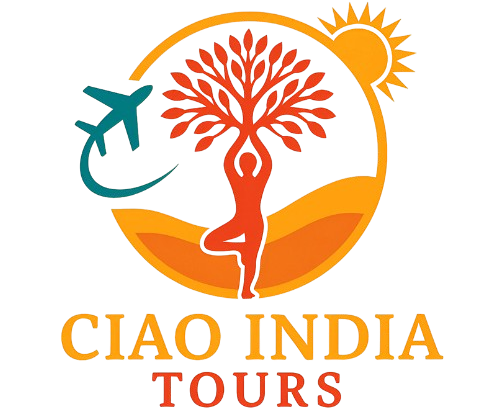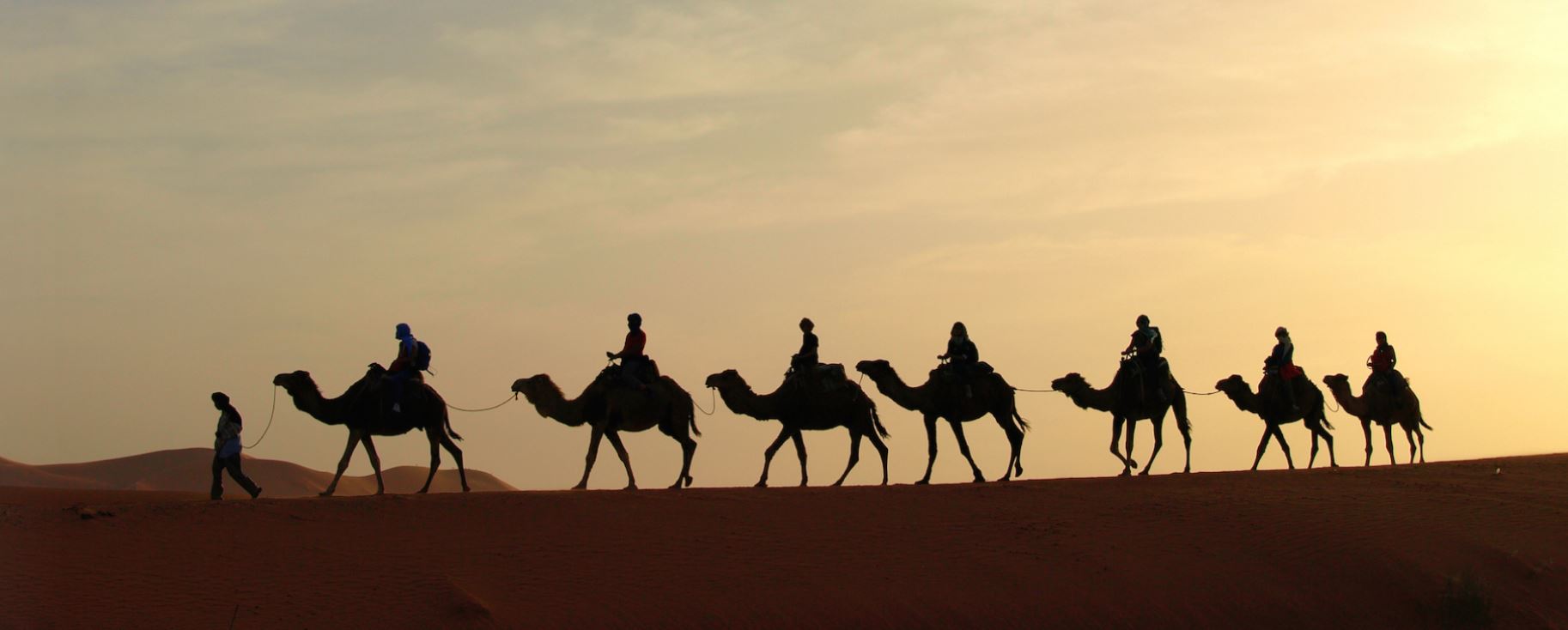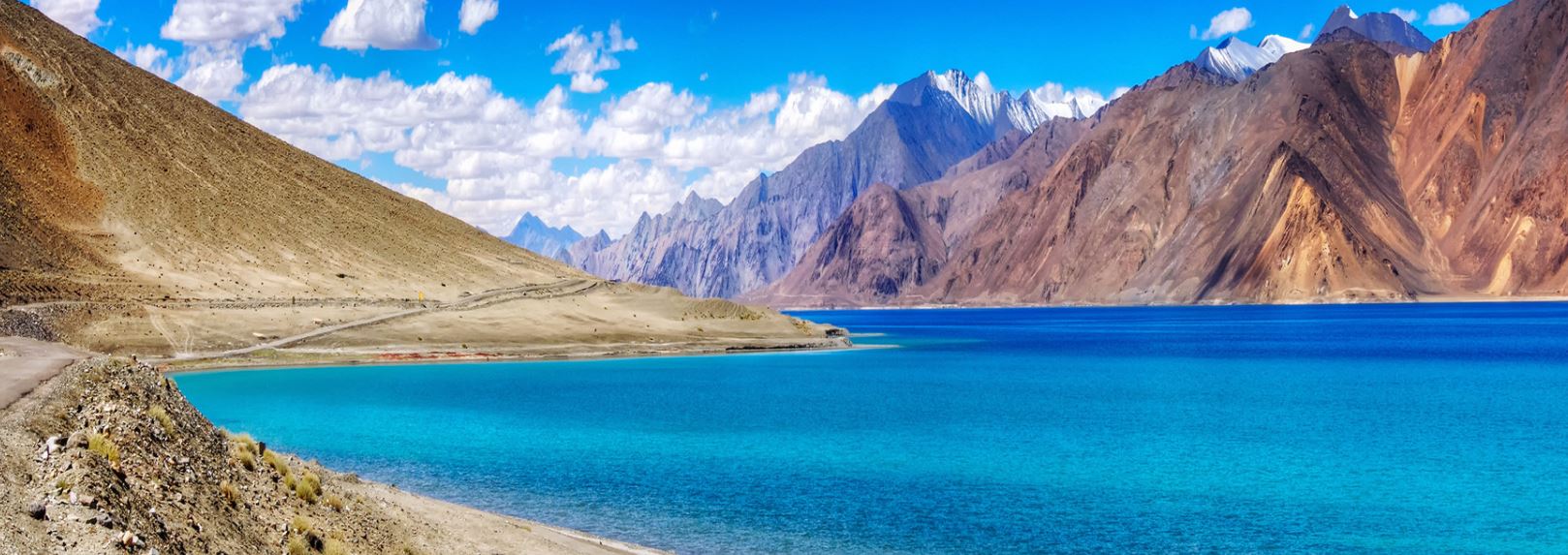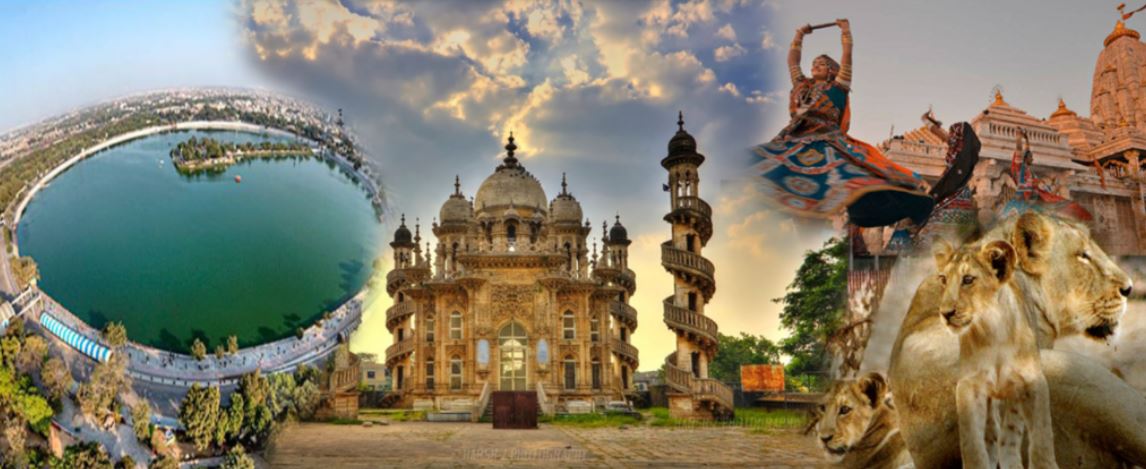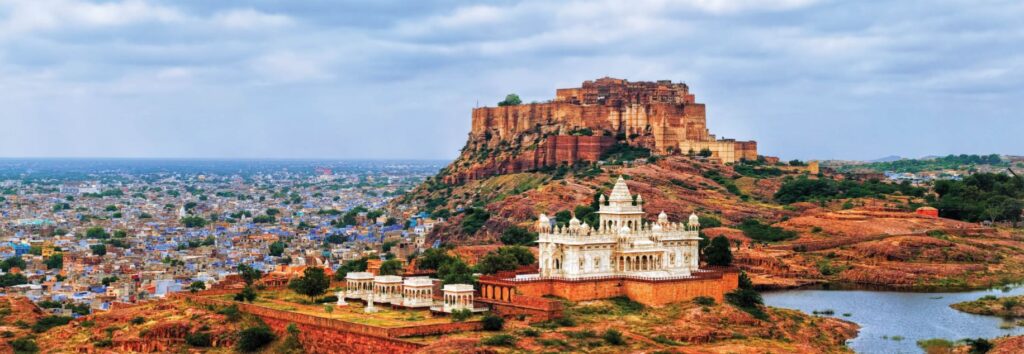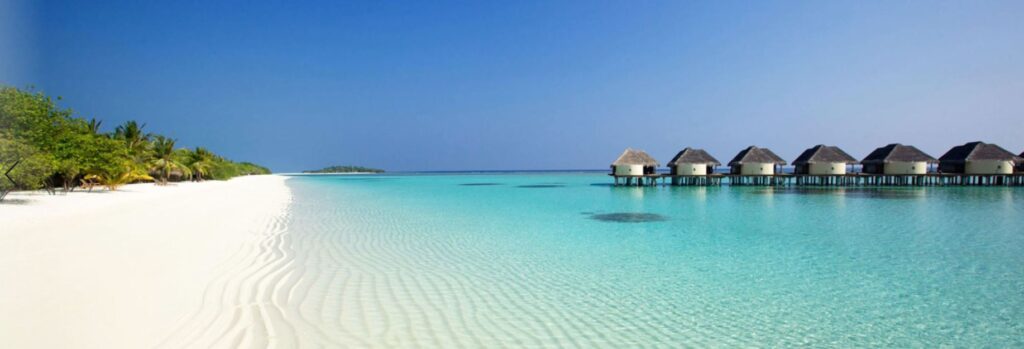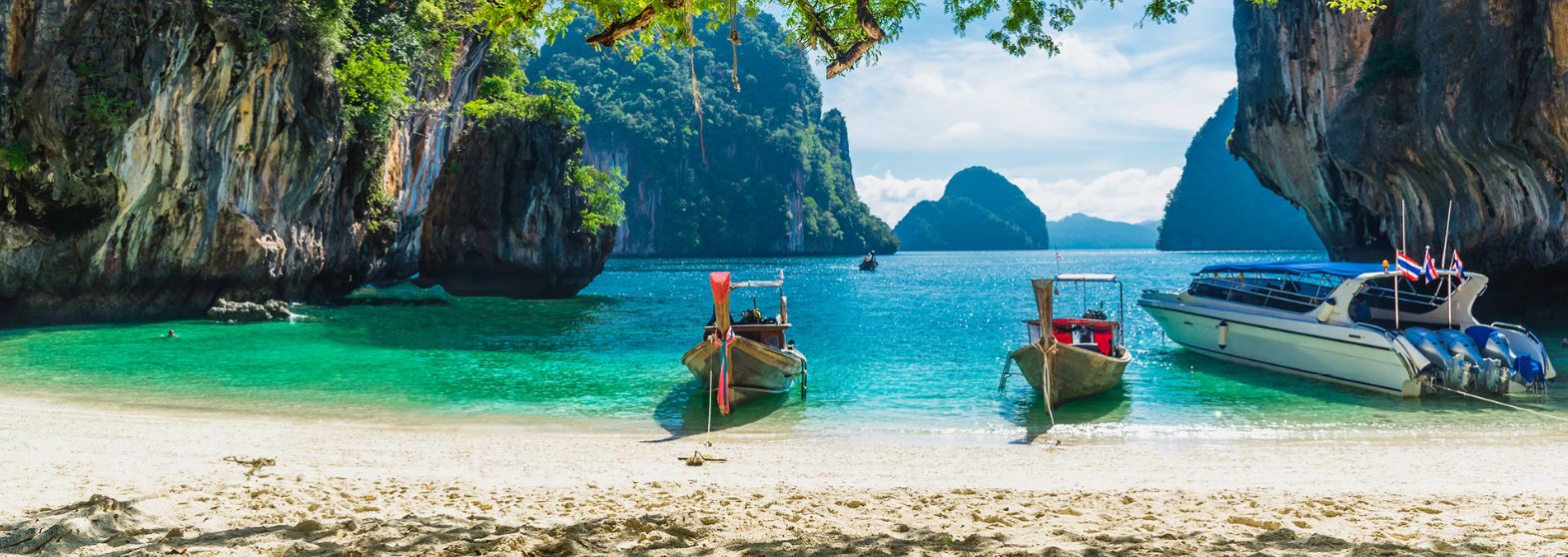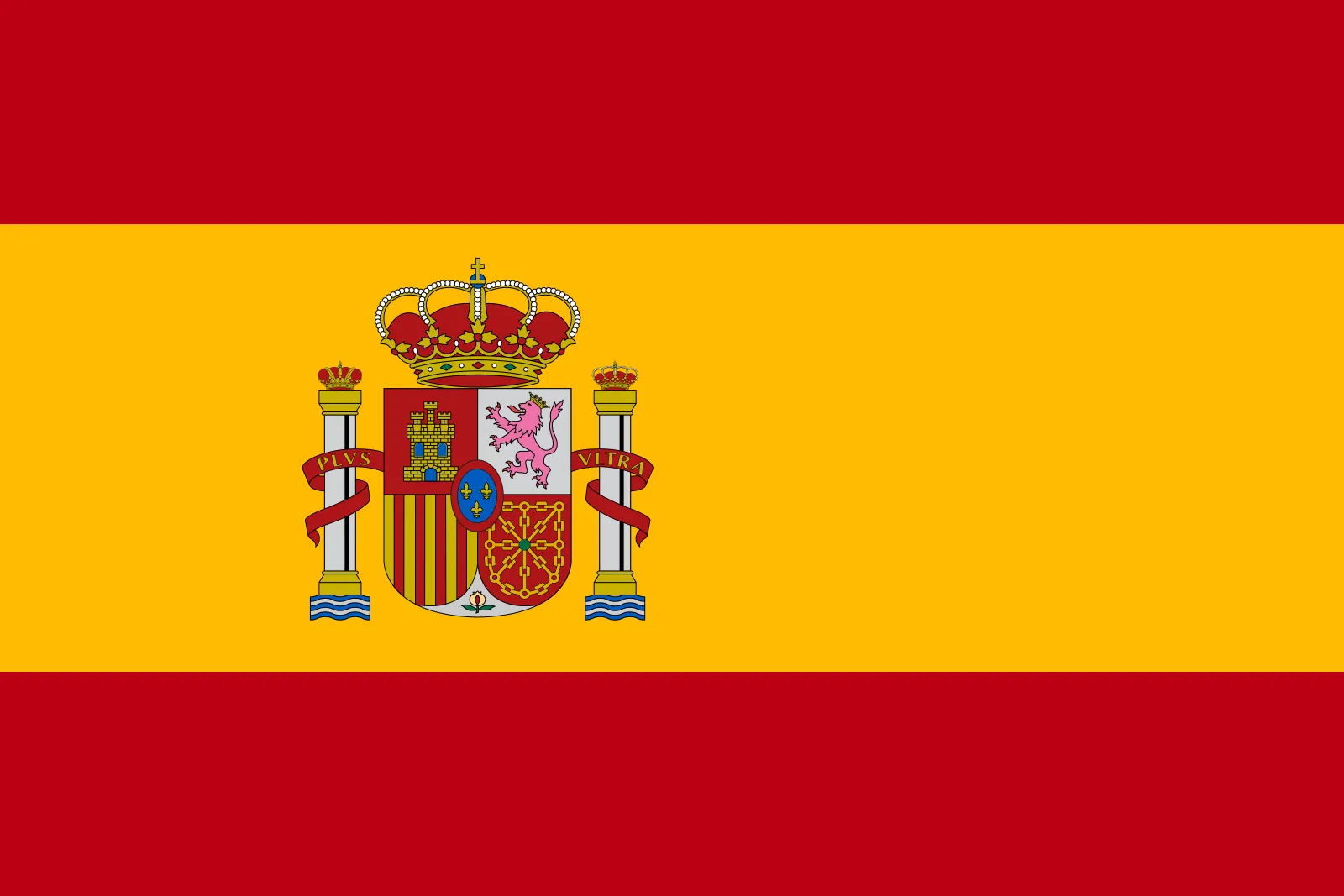All our tours are 100% customizable
Tour of Rajasthan with Varanasi – 16 nights/17 days
Price to be reconfirmed - 948 Euro/pp minimum -02 persons
Delhi-Mandawa-Deshnok-Bikaner-Jaisalmer-Ramdevra-Jodhpur-Ranakpur-Udaipur-Chittorgarh-Pushkar-Jaipur-Abhaneri-Fatehpursikri-Agra-Varanasi-Sarnath-Delhi
Day 1 Arrival in Delhi
Arrival at New Delhi International Airport.
Once the immigration procedures have been completed and your luggage has been collected, our operator will wait for you outside the Terminal for transfer to the hotel.
Arrival at the hotel and check-in. Standard check-in at 2:00 p.m. / Check-out at 12:00 p.m.
After breakfast visit
Jama Masjid: - The largest and best-known mosque in India, stands not far from the Red Fort and Chandni Chowk, the oldest and busiest market in old Delhi
Old Delhi: - The characteristic atmosphere of Delhi's markets can be best enjoyed in Chandni Chowk and generally in the narrow streets teeming with vendors and goods of all kinds at all hours.
Red Fort (Photo stop): - It is one of the works commissioned by the Mughal emperor Shah Jahan in the 17th century, its construction took approximately 9 years of work and 10 million rupees.
Raj Ghat :- Memorial marking the cremation site of Mahatma Gandhi, a man known as the Father of the Nation and a symbol of world pacifism.
India Gate: - In the centre of New Delhi stands the 42 m high India Gate, an "Arch of Triumph" like arch in the middle of a crossroads. Almost similar to its French counterpart, it commemorates the 70,000 Indian soldiers who lost their lives fighting for the British Army during the First World War.
Rashtrapati Bhavan and The Parliament Building (Photo stop) - Home to the president of the world's largest democracy, you can also see the old and new parliament house.
Laxmi Narayan Temple: - Lord Narayan is with his consort Goddess Laxmi (the goddess of prosperity), so the temple is called Laxminarayan Temple.
Gurudwara Bangla Sahib: - It is one of the most important Sikh gurdwaras, or house of worship of the Sikhs, linked to the eighth Guru, Guru Har Krishan, it is also known for the swimming pool inside its complex, known by the name of "Sarovar”.
Overnight stay in Delhi.
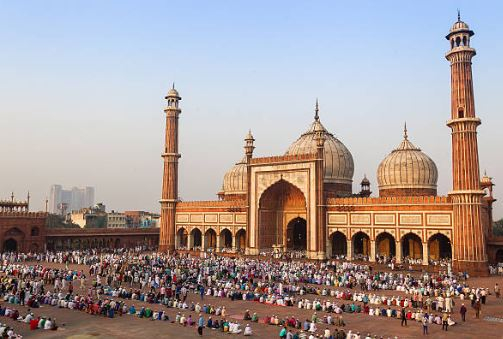
Day 2 - Delhi-Mandawa (243 km, 6 hours)
After breakfast drive to Mandawa.
Visit a small town called Mandawa which is famous for its painted havelis (palaces), it is located in the heart of the Shekhawati region of Rajasthan, known throughout the state for its painted havelis (palaces). Also called "Rajasthan Open Air Gallery". Its havelis still show the wealth of the 'Marwari Era' of the 19th century.
Overnight in Mandawa.

Day 3 -Mandawa-Deshnok-Bikaner (192 km, 3:30 hours)
After breakfast, departure to Bikaner.
On the way we visited the Rat Temple (Karni Mata) The temple is famous for the approximately 20,000 black rats that live and are worshiped in the temple.
Arrival in Bikaner, in the afternoon visit to Junagarh Fort and ride in a tuk tuk.
Junagarh Fort – The fort was built under the supervision of Karan Chand, Prime Minister Raja Rai Singh, the sixth ruler of Bikaner, who ruled from 1571 to 1611 AD Construction of the associated walls and moat began in 1589 and was completed in 1594
Tuk Tuk Ride - The Old City area of Bikaner is made up of traditional neighbourhoods, with narrow alleys, historic mansions, residential areas and colourful bazaars. On this tour, we will explore the vibrant street culture and stately homes (Havelis) of the old town by traveling by auto rickshaw (tuk tuk) and on foot.
Overnight in Bikaner.
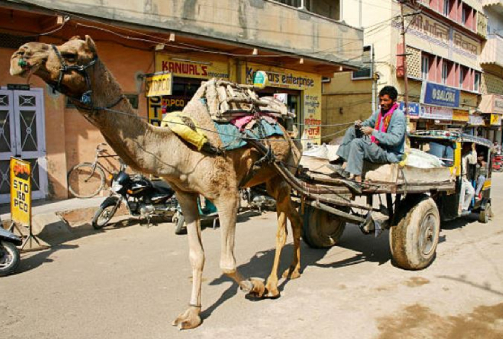
Day 4 - Bikaner-Ramdevra-Jaisalmer (250 KM, 5 Hours)
After breakfast, drive to Jaisalmer en route. Visit.
Ramdevra Temple - A small town in Jaisalmer, the most popular destination in Ramdevra is the esteemed Ramdevra Temple. The temple is the final resting place of Baba Ramdevji, a 14th century saint whom Hindus consider the incarnation of Lord Krishna.
Bhaderiya Temple and Library -This treasure house of knowledge is among the largest libraries in Asia with a collection of around 900,000 books and seating for 4,000 people. Even those 16 feet underground. However, the location helps keep it cool even during the scorching summers.
Arrival in Jaisalmer
Visit Bada Bag - About 6 kilometres north of Jaisalmer is Bada Bagh, also called Barabagh (literally Great Garden). This garden complex houses royal chhatris or cenotaphs of the maharajas of the state of Jaisalmer, including that of Jai Singh II. The position of the garden is such that it offers tourists wonderful views of the sunset.
Overnight in Jaisalmer.
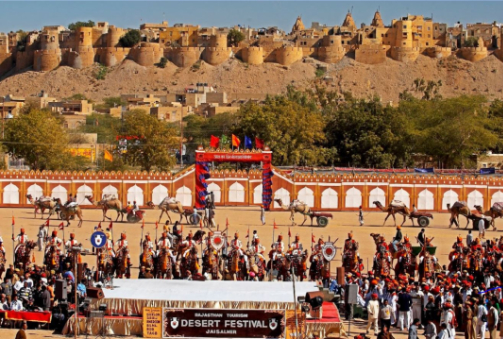
Day 5 - Jaisalmer
After breakfast the day begins and we visit
Gadisar Lake - It was built by Maharawal Gadsi in the 14th century and was the main source of drinking water for the city of Jaisalmer.
Sónar Fort - With its golden walls rising from the edge of the desert. In Jaisalmer you will see beautiful mansions or havelis with balconies and windows covered with fine carved screens.
Heritage Walk - Walk through the old houses and through the local market you can witness the local culture of the place and then visit Patwon Ki Haveli, with its unique architecture and design, it is one of the most important Haveli in Jaisalmer and Rajasthan.
Return to the hotel to rest and then leave for the Thar Desert for the camel ride.
Camel Ride - Thar Desert Camel Ride is the best way to enjoy the beauty of a desert safari in Jaisalmer, the golden city. From strolling through the sand dunes to enjoying the sight of traditionally decorated camels,
Overnight in Jaisalmer.

Day 6 - Jaisalmer-Jodhpur (286 KM, 5 hours 30 minutes)
After breakfast drive to Jodhpur.
On arrival in Jodhpur visit Mehrangarh Fort, which is the main attraction of Jodhpur. Mehrangarh has unique importance as a repository of artistic and cultural history of the vast areas of central Rajasthan and Marwar.
Jaswant Thada: Beautiful marble monument often described as the 'Taj Mahal of Marwar' was built in memory of Maharaja Jaswant Singhjill of Jodhpur (1873-1895) by his son Maharaja Sardar Singhji (1895-1911) completed in 1906 AD.
Jodhpur Old City and Market - The old city of Jodhpur, founded by Rao Jodhaji DC in 1459, is surrounded by a 10 km wall containing eight gates that serve as entrances. The new city built around this wall. Jodhpur is an exquisite combination of modern and traditional buildings.
The Jodhpur local market near the clock tower is famous for its spices, perfumes, handicrafts, footwear, spices and traditional clothing for men and women.
Overnight in Jodhpur.

Day 7 - Jodhpur-Ranakpur-Udaipur (259 km, 5 hours)
After breakfast
Enjoy Bishnoi Village Safari
The Bishnoi village of Jodhpur, Rajasthan is a scenic beauty characterized by Khejri trees and deer. Also in the village is the Guda Bishnoi lake. A person interested in wildlife and exotic nature should definitely visit this town.
The Bishnoi and Opium: Although it is now illegal in India and prohibited by the 29 principles of the Bishnoi, the sect still uses it and has received special consent from the Indian government to use opium for "religious" purposes.
Departure for Udaipur
On the way visit the Ranakpur Jain temple - The temples of Ranakpur are acclaimed throughout the world for their intricate and superb architectural style. These temples form one of the five major pilgrimages of Jains
Transfer to hotel upon arrival in Udaipur.
Overnight in Udaipur.
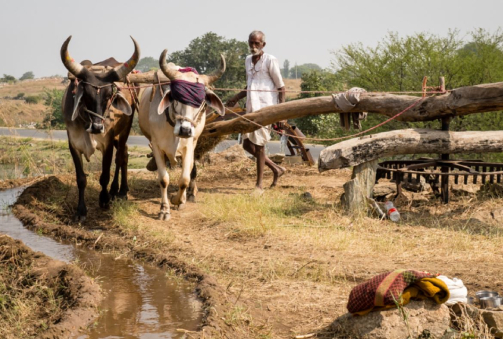
Day 8 - Udaipur
After breakfast Visit Udaipur
No city in Rajasthan is as romantic as Udaipur. This picturesque town sits on the shores of Lake Pichola. Udaipur is the city of lakes, surrounded by natural and man-made lakes, which are relaxing and crystal clear.
Visit City Palace - It is the largest palace complex in Rajasthan and is located on the eastern bank of the serene Lake Pichola. Built of marble and granite in 1725 by Maharana Udai Singh. A fine blend of medieval Indo-European architecture, you will be amazed by the small luxury of its courtyards, stacked walls, terraces, walkways and lush green gardens.
The Jagadish Temple - Next to the City Palace enshrines a black stone image of Lord Vishnu and his vehicle, a powerful bird called Garuda, in a bronze image. The temple is a good example of Indo-Aryan art. A majestic garden located on one of the shores of Lake Fateh Sagar,
Saheliyon-ki-Bari – It features expensive lawns, shady sidewalks and impressive fountains. It is one of the best places in Udaipur to relax. Later enjoy a boat ride on Lake Pichola (depends on water level).
Lake Pichola -The beautiful expanse of water surrounding the two marvellous structures of Jag Niwas and Jag Mandir, is the lifeline of the city of Udaipur.
Overnight in Udaipur.
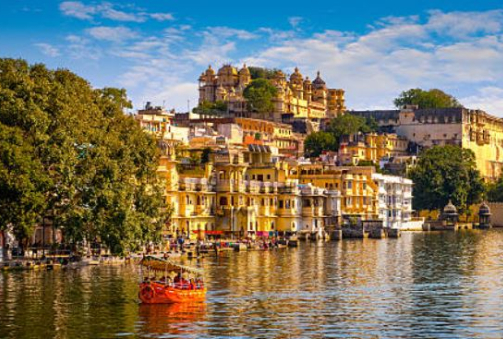
Day 9 - Udaipur-Chittorgarh-Pushkar (324 Km, 6 Hours)
After breakfast, drive to Pushkar.
On the way visit the world famous city of Chittorgarh.
Visit Vijay Stambha:- The Jaya Stambha or Victory Tower, located in Chitor Fort, was erected by Rana Kumbha (ruled 1433-1468) in 1448 to commemorate his victory over the Muslim ruler of Delhi.
Chittorgarh Fort: - The Vijaya Stambha (Victory Tower) or Jaya Stambha, called the symbol of Chittorgarh and a particularly bold expression of triumph, was erected by Rana Kumbha between 1458 and 1468 to commemorate his victory over Mahmud Shah El Khaljis, the Sultan of Malwa, in 1440 AD.
Rana Kumbha Palace: - It is one of the major attractions located inside Chittorgarh Fort near Vijaya Stambha. Originally, the palace was built by Bappa Rawal in 734 AD and later rebuilt by Maharana Kumbha.
Rana Ratan Singh Palace: - Located along Ratneshwar Talab, this palace is one of the best places to visit in Chittorgarh. Ratan Singh Palace is attributed to Rana Ratan Singh II (1528 – 31 AD). It has a rectangular plan and is enclosed by a high wall.
Kirti Stambha: - The 22 meter (72 ft) tower was built by a Jain merchant Jeeja Bhagerwala during the reign of Rawal Kumar Singh in c. 1179–1191 AD.
Upon arrival in Pushkar, transfer to the hotel.
Overnight in Pushkar.

Day 10 - Pushkar-Jaipur (148 KM, 2 hours 57 minutes)
After breakfast start the day to visit Pushkar.
Visit Pushkar Lake, Brahma Temple and the local market.
Pushkar is a city overlooking the Thar Desert in the north-eastern Indian state of Rajasthan. It is located on Lake Pushkar, a Hindu sacred site with 52 Ghats (stone stairs) where pilgrims bathe
The Brahma Temple: - The structure dates back to the 14th century. The temple is said to have been built by sage Vishwamitra after the yagna (ritual) of Brahma. It is also believed that Brahma himself chose the site for his temple.
Pushkar Lake: - It is a sacred lake of Hindus. Hindu scriptures describe him as 'Tirtha-Guru', the perceiver of pilgrimage sites linked to a body of water and link him with the mythology of the creator god Brahma, whose most important temple is located in Pushkar.
Depart to Jaipur.
Upon arrival visit Galtaji Temple: - The temple is also known as the monkey temple as there are many monkeys in it. The temple is dedicated to the god Hanumana, built in the 16th century by Diwan Rao Kriparam, who was an advisor to King Sawai Jai Singh II.
Birla mandir:- Birla Temple, Jaipur At the foot of the Moti Dungri fort lies the Birla Temple. This temple is one of the best attractions in Jaipur. The Birla Temple in Jaipur is impressive, when illuminated at night.
Overnight in Jaipur.

Day 11 Jaipur
After breakfast the day begins.
Visit Amer Fort, Jantar Mantar, Hawa Mahal, City Palace and Local Market.
Amer Fort: - Amer is a city with an area of 4 square kilometres (1.5 sq. mi) located 11 kilometers (6.8 mi) from Jaipur, the capital of Rajasthan. Located on top of a hill, it is the main tourist attraction in the Jaipur area.
Jal Mahal (Photo Stop): - Jal Mahal is a work of art which is located in the center of Man Sagar lake, the palace will give you the illusion of almost floating on top of the lake and that is the moment when this The sight takes your breath away.
Jantar Mantar:- It is an equinoctial sundial, consisting of a gigantic triangular gnomon with the hypotenuse parallel to the axis of the earth
Hawa Mahal (Outdoor Photo Stop): - Hawa Mahal (English translation: "Palace of Winds" or "Palace of Breeze") is a palace in Jaipur, India, hence its name because it was essentially a wall of tall screen built in a way that women of the royal family could observe street festivals without being seen from the outside
City Palace, Jaipur, comprising the Chandra Mahal and Mubarak Mahal palaces and other buildings, is a palace complex in Jaipur, the capital of the state of Rajasthan, India. It was the seat of the Maharaja of Jaipur, the head of the Kachwaha Rajput clan.
Local Market: - Jaipur which is famous for jewellery and clothing is most visited by people who love both. There are many famous markets in Jaipur selling precious stones, gems, semi-precious stones and jewellery with limited warranty. buy all this .
Overnight in Jaipur.
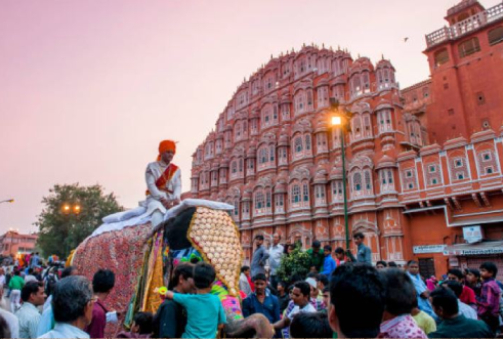
Day 12 -Jaipur-Abhaneri-Fatehpur Sikri-Agra (241 km 4 hours 30 minutes)
After breakfast drive to Agra.
On the way we will visit the world famous Chand Baori well located in the small village of Abhaneri.
Abhaneri is famous for its 'bhaori', wells dug by natives to collect rainwater. These structures, depending on the time of year, are used as places to cool off or as water tanks. Chand Baori is the most popular of the wells in the region and is one of the deepest and largest in India
Fatehpur Sikri -Built by the Mughal emperor Akbar in the mid-16th century, Fatehpur Sikri (or City of Victory) was the capital of his empire for 15 years. Built in the Indo-Islamic style, Sikri is a red sandstone complex filled with palaces, mosques, temples and other structures.
Overnight in Agra.

Day 13 Agra-Varanasi (By overnight train from Agra or flight from Delhi as you like)
After breakfast.
Visit the Taj Mahal, one of the seven wonders of the world and a must-see for anyone visiting India, it is considered the most romantic work of art in existence. The construction of this jeweled palace, a symbol of Shah Jahan's undying love for his beautiful wife Mumtaz Mahal, who died after giving birth to her fourteenth child, was completed in 1653 AD
After visiting the Taj Mahal, proceed to visit the Agra Fort.
Agra Fort - The crescent-shaped Agra Fort lies along the banks of the Yamuna River and was commissioned in 1565 by Akbar, one of the greatest Mughal emperors.
Itimad ud daula - Built by Nur Jahan, in memory of his father Ghias-ud-Din Beg, who was given the title 'Itimad-ud-Daulah', meaning 'Pillar of Government'.
Mehtab Bagh - This beautiful garden is located on the western bank of the Yamuna River and is in perfect alignment with the Taj Mahal Gardens located on the other side of the river.
Sadar Bazaar: Located near Agra Cantonment Railway Station, Sadar Bazaar is the most famous place in Agra for products like handicrafts, garments, some delicious sweets, leather products.
Transfer to the train station for overnight train to Varanasi.
Overnight in Delhi.
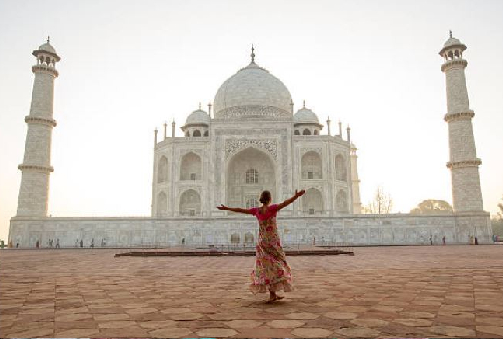
Day 14 Varanasi
Arrival in Varanasi and transfer to the hotel
After breakfast time to relax
In the afternoon visit Sarnath and tour the city.
Sarnath - Sarnath, one of the holiest Buddhist places in the world, is famous for being the place where Gautama Buddha delivered his first sermon. From then until the 12th century AD - almost 1,700 years - it remained a center of great learning, a place of pilgrimage and a vihara (monastery) for monks and scholars
Archaeological Park: - The colossal ruins are located in the same complex as Dhamek Stupa. The excavation sites of Sarnath have impressive collections of monasteries, stupas, temples, inscriptions, sculptures and other antiquities ranging from the 3rd century BC to the 12th century AD.
Wat Thai Sarnath Temple: - Wat Thai Sarnath Temple was built by Thai dignitaries in the year 1933. Adorned with well-kept gardens, the Thai temple is built in the Thai architectural style and is run by Thai Buddhist monks.
Benaras Hindu University:- Varanasi is also known as the “Centre of Education” for centuries. Since ancient times, people from all over the world have come here to learn various skills.
Godowlia Market: - Godowlia has narrow streets lined on both sides with squat buildings and small shops selling everything from ordinary everyday household items to hardware, fine silk and brocade fabrics, shawls, zari work, ready-made garments, shoes, beads and bracelets and other trinkets.
Then in the evening proceed to evening prayer ceremony.
The evening prayer called Ganga Aarti :- It is an organized activity which begins by lighting the multi-tiered ceremonial brass lamps and well-synchronized and rhythmic chanting of holy mantras. While some of the priests blow conch shells to sanctify the atmosphere, other priests start waving incense sticks to worship Mother Ganga.
Overnight stay in Varanasi.
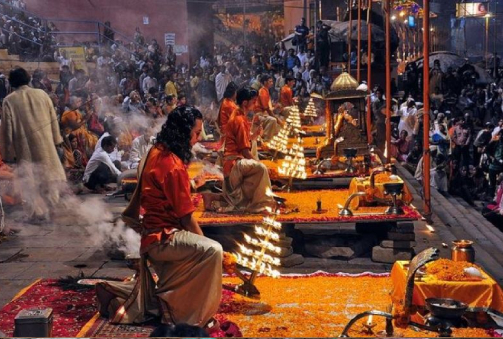
Day 15 Varanasi
Today you need to get up early in the morning to take the boat ride. The best part of enjoying the Ganges River is taking a boat ride on the river. The Ganges River flows through the city and there are numerous ghats connecting the river to the mainland. The day of the people of Varanasi living near the Ganges river begins with the holy dip in the Ganges river with the morning 'Surya Namaskar' - Worship to Sun God. In the morning, the old buildings, ashrams and places along the river look as colorful as a rainbow when the sunlight hits them. People bathing and performing rituals. After the boat ride we take a short heritage walk of the city.
Get down from the boat and visit Old city.
Manikarnika Ghat :- It is one of the most famous, sacred and ancient ghats of Varanasi, Manikarnika is the main burning ghat and one of the most auspicious places where a Hindu can be cremated. The bodies are carried to the ghat by the bamboo stretcher covered by the red cloth which is handled by the doms.
The Kashi Vishwanath Temple (Photo Stop): - The Kashi Vishwanath Temple is one of the most famous temples in Varanasi, also known as the Golden Temple dedicated to Lord Shiva. It was built in the year 1780 by the Maratha monarch, Maharani Ahilyabai Holkar of Indore. This makes Varanasi a tourist spot due to the great religious importance for Hindus.
Walking around the Vishwanath Temple or the Golden Temple area is always a unique experience as it has always been the most important cultural and financial area of Varanasi. A visit to the most beautiful temple artwork in the whole city in Gautameshwar Mahadev, the Golden Temple: the most important Shiva temple in all of India, historical mosques, ancient and hidden alleys, bazaar market in Varanasi, architecture of the ancient building of Varanasi along with the largest crematorium on the planet located at Manikarnika ghat will give you a unique and unforgettable walking experience.
Return to the hotel for breakfast.
The Yoga and Meditation class - Time for yoga and meditation.
Free time to explore to the Ghats of Varanasi
Overnight stay in Varanasi.
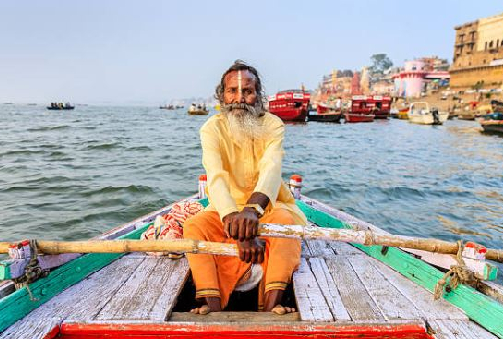
Day 16 Varanasi-Delhi (With flight 1 hour and 25 minutes)
After breakfast departure for Delhi. Transfer to Varanasi airport as per the flight schedule for Delhi.
Upon arrival in Delhi we visit the Qutub Minar: - it is among the most famous monuments, this beautiful 71-meter minaret is considered the tallest tower in the world. The Qutub Minar is one of the many masterpieces that represents the majesty of the Mughal architects.
Connaught place - the large circular market was the largest of its kind in India. The English believed that the horseshoe-shaped market would prove lucky for both shoppers and shopkeepers.
Palika Bazar - This air-conditioned underground market located beneath the inner circle of Connaught Place was established in the late 1970s. It is especially famous for cheap electronic items and clothes. From footwear to clothing to nightwear, from perfumes to accessories to electronic gadgets.
Janpath - Here you can do the best of street shopping. You will find mostly small kiosks selling all kinds of cotton clothes and curios. The clothes are generally export surplus items and are sold cheaply.
Overnight in Delhi.
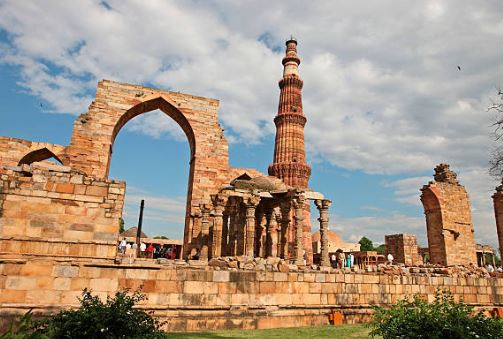
Day 17 Delhi – Next Destination
Transfer to New Delhi International Airport as per your flight
Ciao India Tours wishes you a Happy Journey.
Inclusions:
- 16 nights’ accommodation in 03 star and heritage hotels with breakfast, including all existing taxes.
- All transfers from the airport to the hotel and vice versa are scheduled.
- Meeting and assistance upon arrival by our representative at the airport.
- All scheduled trips with medium air conditioning car.
- Wi-Fi in the car.
- Train from Agra to Varanasi
- Flight from Varanasi to Delhi
- One bottle of water per person every day.
- All taxes included.
- The toll, the parking, the fuel, the driver's accommodation.
Exclusions:
- Visa, International flight, Health insurance, cancellation/change of flights, trains, Alcoholic drinks, Tip, Tourist guide, Tickets for monuments and activities, personal expenses, Camera etc.
- Everything that is not part of the inclusions.
